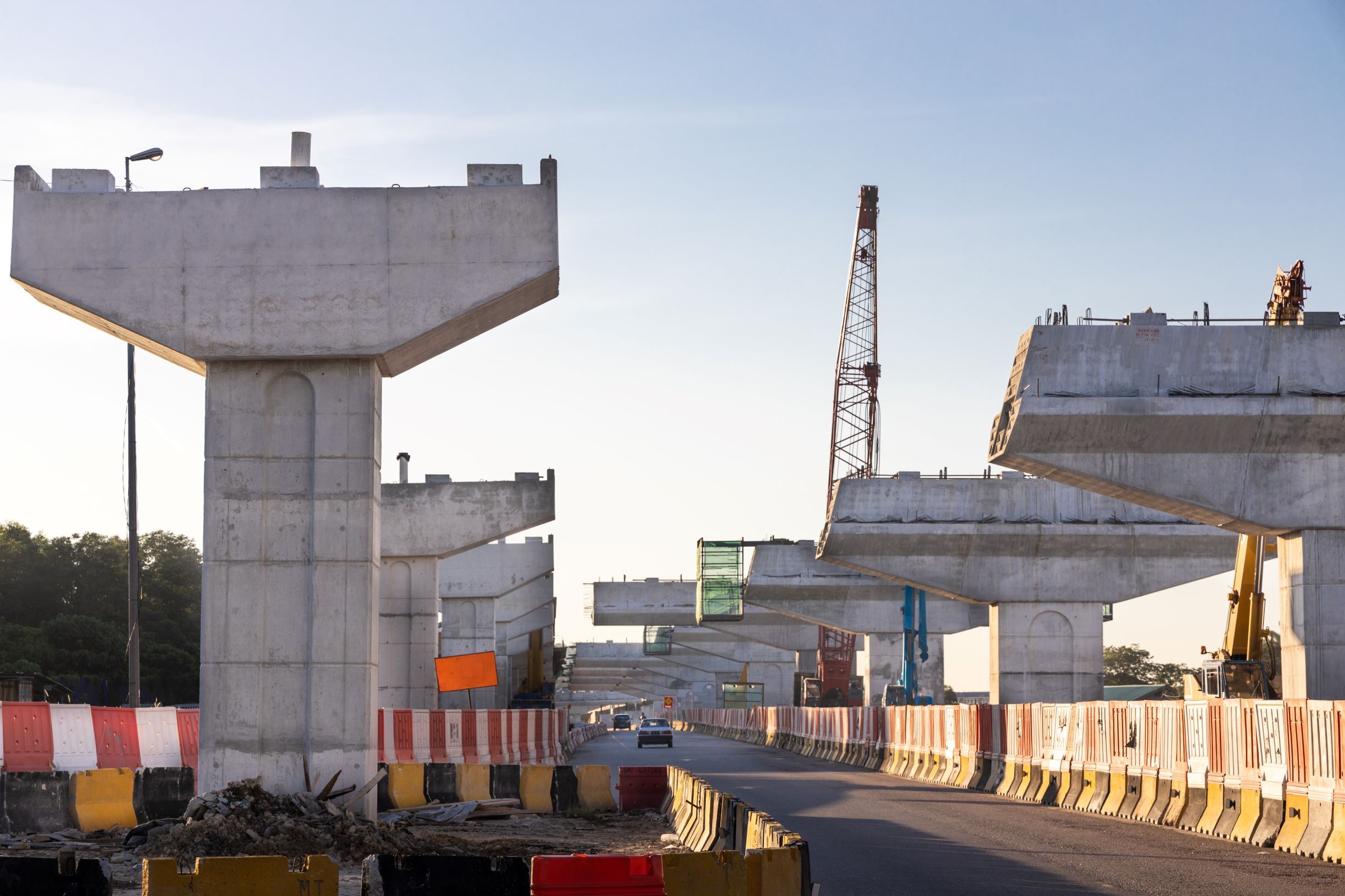Leveraging infrastructure investments for faster economic recovery
Leveraging infrastructure
Infrastructure - The unsung hero of the COVID-19 crisis
Stability in turbulent times
The infrastructure sector has been an unsung hero of the COVID-19 crisis. Despite the complete disruption to how our economies operate and how we live our lives, core critical infrastructure such as power, water, communications and most transport systems has kept the economy broadly operational. True to its word, infrastructure has literally kept the lights (and internet!) on throughout the pandemic.
The cost of pandemic
The global cost - economic as well as social - of COVID-19 has been and continues to be exorbitant by any standard of measurement. It is estimated to be between US$5.8-8.8trn by the Asian Development Bank (ADB)1, and potentially as high as US$82trn spread over the next five years based on a recent study by Cambridge University.2
Many emerging markets were already facing financial difficulty even prior to the pandemic with limited government financial capacity to fund projects and strained corporate balance sheets. Given the fiscal pressures put on government finances by various job protection and economic stimulus packages as well as healthcare costs and investments, it will further reduce the ability of governments to drive infrastructure project development soon. This will be a double whammy given slowdowns or delays in infrastructure development will further impact the economic recovery.
The infrastructure sector has strong economic growth correlation and a substantial multiplier effect. According to the Economic Policy Institute, every US$100 spent on infrastructure boosts private-sector output by a median of US$13 and an average of US$17 in the long run. Furthermore, each US$100 billion in infrastructure spending boosts job growth by roughly one million full-time equivalents.
Given the strong economic spinoffs -impetus to job creation and economic growth -of a typical infrastructure investment, it is imperative in the current environment to prioritize infrastructure project investments.
Leveraging shovel ready project pipeline
With many experts predicting the worst global economic recession since the Second World War - with emerging markets being the worst hit due to a confluence of factors such as strained government finances, reduced economic activity leading to recession, rising unemployment and loss of demographic dividend due to shortage in necessary infrastructure availability –there is a huge opportunity cost for emerging markets which they can ill afford.
This strong correlation between infrastructure investment and economic spinoffs has always been top of mind for various policy makers, especially in emerging markets with young demographics requiring strong employment opportunities in the economy.
Promoting infrastructure investment could be an effective tool to counter the slowdown, and to fast track economy recovery. Governments should consider fast tracking shovel-ready projects -defined as projects ready to be offered to the market for implementation based on completed feasibility studies -to get economic activity going and attracting investments.
The biggest challenge for most emerging markets has been the inability to offer a viable infrastructure project pipeline for investments. This can be addressed to a very great extent by prioritizing infrastructure projects with support from multilateral organizations.
The Association of Southeast Asian Nations (ASEAN) in collaboration with the World Bank recently published a list of priority projects under the Master Plan on ASEAN Connectivity 20253. This list of projects is derived based on screening criteria which meet certain pre-conditions to attract robust investments. The list covers transport, energy, and information and communication technology sectors which will potentially contribute to improving the movement of people, services, goods and innovations among the ASEAN member states.
In addition, countries such as Indonesia have embarked on an asset recycling program under the Limited Concession Scheme. This entails offering brownfield infrastructure projects to the private sector under a long term (15 to 20 years) concession to own and operate. This is likely to help unlock government capital while offering a robust pipeline of commercially viable operating projects. The capital thus raised can be deployed to develop other greenfield infrastructure projects while the successful track record of working with private sector will ensure further confidence in delivering future projects – both greenfield and brownfield – together with private sector participation.
Leveraging alternate financing sources
While multilaterals and governments are working to ensure capacity development in the public sector, the project financing challenge remains critical one. Players will need to get creative by increased use of innovative finance solutions including blended finance, sustainable innovation funds, and green bonds to unlock capital to the right projects.
Investors can also influence the types of projects that are re-prioritized through robust environmental, social and governance (ESG) criteria and the development of targeted funds. Several large asset managers have prioritized sustainable investing, and ESG evaluation will be a critical driver to identify projects suitable for private financing.
Two critical options can help drive the agenda of prioritizing infrastructure projects pipeline in the emerging markets.
1. First is tapping alternate sources of financing including local capital markets, joint ventures with state owned enterprises and leveraging local bank financing.
2. The second option is for multilateral agencies to pre-fund part of the debt of identified priority projects before it is offered to the market. This concept of staple financing – making 20 to 25 percent of the debt pre-funded - would be not only a huge stamp of confidence on the commercial viability of the project and its ESG credentials, but also help the private sector to focus on identified projects to bring the best in private sector innovation and technology, offering the best value for money to governments.
This was also articulated by the World Economic Forum in their recent publication encouraging greater use of unsolicited proposals, increased innovative private sector participation and the support of multilateral development banks.
Leveraging technology and innovation
With the advent of technologies such as IoT (the internet of things) and Robotics Process Automation (RPA) for remote monitoring and response as well as digital tools (data analytics, advanced metering infrastructure) for load planning, predictive maintenance and similar activities, the infrastructure of tomorrow will be smart.

Emerging markets will likely be the biggest beneficiaries of this technological innovation for efficient service delivery given the low cost and absence of legacy systems that may impede new infrastructure creation. Old infrastructure, such as power plants and water projects, can be upgraded with best-in-class technology, while at the same time creating smart urban infrastructure projects in areas of governance, citizen centric services, buildings, land management, and the environment, amongst others.
Every infrastructure project procurement should have a strong technology and innovation angle. Just as cost efficiency of renewable energy has made it ubiquitous in emerging markets, more opportunities to test and deploy new innovative technologies can help fast-track cost efficient and better utilized infrastructure services.
One example is the digital land registry in Suva, Fiji. The program to convert physical records into digital records not only made the system secure, but also reduced the processing time for land transactions by 90 percent, bringing in transparency, robust governance and increased private sector investments. Such projects, once successfully implemented in one place, can easily be replicated in other similar markets thereby laying a strong foundation for smart digital urban economy.
The other angle to implement technology is for effective project delivery, as complex infrastructure projects being implemented by private sector or state-owned enterprises generally see cost and time overrun risks which need to be mitigated to the satisfaction of all the stakeholders including the project finance lenders. Tools such as Power BI and Tableau offer efficient ways implement place a single version of truth that can be monitored easily on a dashboard presented on mobile devices on a real time basis. Leveraging technology for reducing “cost to service” and efficient delivery of projects will go a long way in sustaining a viable eco-system of projects.
Conclusion
To conclude, there are many aspects of our lives today that remain unpredictable as we cope with the ongoing effects of COVID-19. Infrastructure projects need to be able to withstand this uncertainty in order to be viable and to deliver long term benefits. A financially sustainable business case, optimal risk mitigation, technology-led innovation and robust project management can help ensure that the projects promising the most benefits to a post COVID-19 world are prioritized.
Collaboration, connectivity, risk sharing, investment and a deep alignment with the needs of evolving societies – while addressing current concerns about the impact of this crisis on inequality – can help ensure that infrastructure not only keeps the lights on, but paves the way for societies that are reinforced by sustainable and resilient growth.

